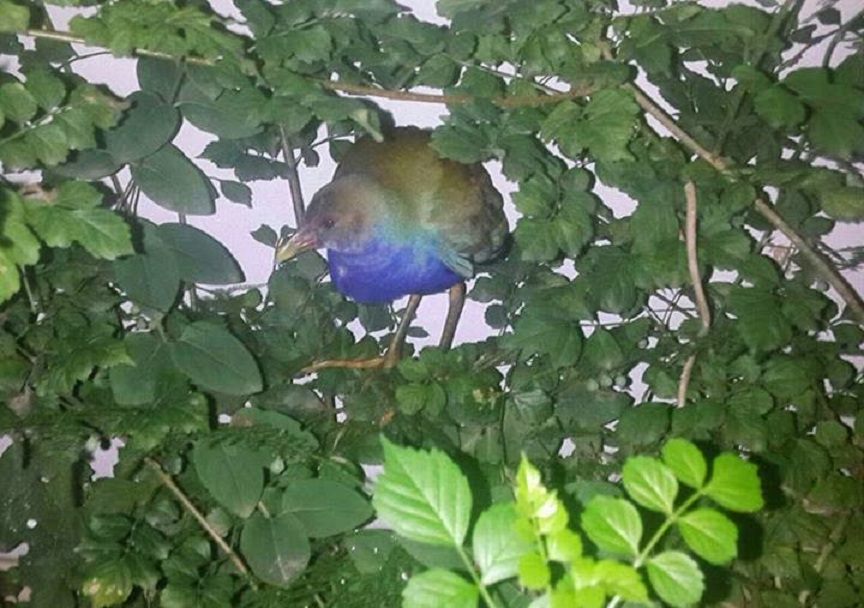The report of the Moroccan Rare Birds Committee (MRBC) for the year 2015 has just been published. During that period, the MRBC examined 124 new records of which 112 were accepted.
The report included the first Moroccan records of three species:
- White-backed Vulture (Gyps africanus). It’s also the 4th for the Western Palearctic, seen at Tétouan in May 2014.
- Golden Nightjar (Caprimulgus eximius). It’s also the first documented record for the Western Palearctic. Seen on the famous Dakhla-Aousserd road in May 2015, unfortunately the bird hit the observers’ car and died.
- American Purple Gallinule (Porphyrio martinicus), seen at Kenitra in November 2014.
There is also the 2nd record of Great Knot (Calidris tenuirostris), and the first record of Franklin’s Gull (Leucophaeus pipixcan) on the Mediterranean coast (it’s the 8th record for Morocco).
The report included also new records of Olive-backed Pipit (Anthus hodgsoni), Pied Crow (Corvus albus), Citrine Wagtail (Motacilla citreola), Dark Chanting Goshawk (Melierax metabates), Namaqua Dove (Oena capensis), Lesser Scaup (Aythya affinis), Sudan Golden Sparrow (Passer luteus), Lesser Yellowlegs (Tringa flavipes), Allen’s Gallinule (Porphyrio alleni), Kelp Gull (Larus dominicanus), Yellow-browed Warbler (Phylloscopus inornatus), Collared Flycatcher (Ficedula albicollis), Lammergeier (Gypaetus barbatus), and a number of other species.
It included also new records of the invasive Monk Parakeet (Myiopsitta monachus) which started to colonise two new cities (Tangier and Marrakech). Also, several records of Rüppell’s Vulture (Gyps rueppelli) mainly from or near Jbel Moussa, and of Red-footed Falcon (Falco vespertinus).
Full report:
Fareh, M., Franchimont, J., Maire, B. & CHM. 2016. Les oiseaux rares au Maroc. Rapport de la Commission d’Homologation Marocaine, Numéro 21 (2015). Go-South Bulletin 13: 18-35.

Note:
For the Allen’s Gallinule, there was an error in the report for the date of the second observation. A juvenile bird was first found and photographed by Ali Irizi at Oued Massa on 28 December 2014. Three days later, Daniel Vrauwdeunt found a juvenile not far from the site of the first observation (it was most likely the same bird based on the photos, the dates and the same site).